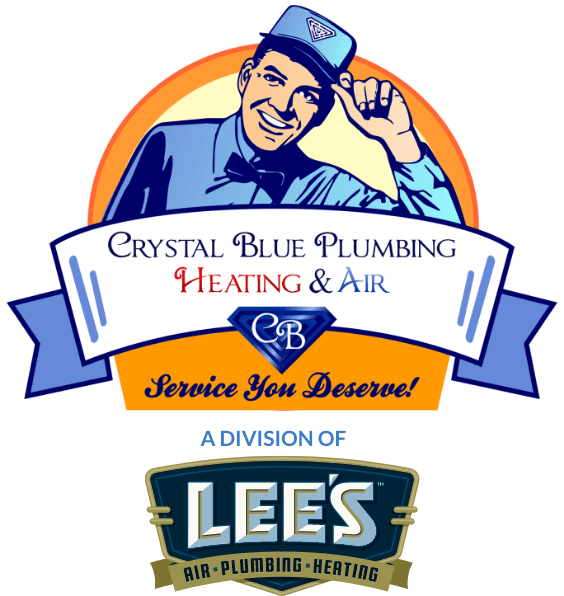The Dangers of DIY Plumbing Repairs in Emergencies
When a pipe bursts or water starts pooling under your sink, your first instinct might be to grab a wrench and try to stop the chaos yourself. At the moment, it feels faster than calling for help and more cost-effective than waiting. However, rushing into plumbing repairs without the right tools or experience can often cause more damage than it resolves. What starts as a small leak can turn into drywall repairs, water damage, or even code violations. At Crystal Blue Plumbing Heating & Air in Sacramento, CA, we’ve seen firsthand how a well-intentioned fix can snowball into a much bigger problem.
Mismatched Parts and Tools Can Ruin Water Flow
When you’re dealing with an emergency leak or a burst pipe, grabbing whatever tool is nearby might feel like the fastest way to get things under control. But plumbing isn’t as forgiving as it looks. Wrenches, pliers, and cutters come in specific sizes for a reason. Using something that’s too big, too small, or not made for the fitting at hand can damage the parts you’re trying to save. You might strip threads, crack a coupling, or deform a pipe end so badly that even a professional can’t remove it without cutting into the system.
Older pipes are especially at risk. Materials like PVC and copper can become brittle after years of use or exposure to heat. Putting uneven pressure on them with the wrong tool can create cracks that don’t show up right away but will fail once the system is back under pressure. A rushed fix can quickly evolve into a full-blown replacement job, especially if the break spreads or loosens other fittings nearby.
The same risk applies when you swap out parts without matching them exactly. A fitting that seems “close enough” might throw off the water pressure, cause corrosion between dissimilar metals, or expand at a different rate than the pipe it connects to. That mismatch creates stress points where leaks eventually form. You might not notice the damage for weeks, but when it shows up, it’s usually in the form of water damage, slow drains, or strange noises in the walls.
In plumbing, precision matters. Tools aren’t interchangeable, and neither are parts. Choosing the wrong one can shorten the life of your pipes, increase your repair bill, and set off a chain reaction of avoidable problems throughout your plumbing system.
In a Rush, You Can Miss Hidden Damage
If you’re in a panic about a leak, your focus naturally lands on the wet area you can see. You clean it up, fix what appears to be broken, and move on. However, plumbing issues rarely remain confined to one spot. Water runs wherever it finds space. It can seep under floors, soak into drywall, or collect inside cabinets. If you patch the source without checking the surrounding area, mold and mildew have time to grow.
Wood can swell or warp. Screws loosen. Floorboards buckle. These effects can appear days or weeks later, long after you believe the initial leak has been repaired. That time gap makes it harder to connect the damage to your earlier fix. By the time you notice that something feels off, you may be dealing with home repairs that go beyond plumbing. Emergency plumbing problems usually create invisible risks. Without experience, it’s difficult to determine where the water traveled and how far the problem has spread.
Hot Water Systems Aren’t DIY-Friendly
Your water heater might seem easy enough to troubleshoot. But it runs on systems that require more care than cold water lines. Whether it’s gas or electric, your water heater ties into safety mechanisms that regulate temperature and pressure. If you tamper with those without the right training, you risk scalding water or worse. Pressure relief valves can fail when handled incorrectly. The tank could build pressure beyond its capacity.
A mistake might not be apparent right away, but when it is, it can be dangerous. Even replacing a thermostat or adjusting the temperature can create future problems if you’re not familiar with the manufacturer’s specs. If your hot water goes out, or you see rust-colored water coming from the tap, those aren’t signs to experiment with repairs. They are signs that the system needs a closer look, inside and out. Safety features are built to last, but only if you leave them intact and handle them with care.
Drain Cleaners Can Damage Pipes
In the middle of a backup, pouring something strong down the drain feels like a shortcut. You want the clog gone, and the label promises fast results. But chemical drain cleaners carry more risks than rewards. They break down hair and grease, but they also eat away at pipe linings. If your home has older plumbing, the reaction between those chemicals and pipe materials can cause thinning or pitting in the walls.
That damage doesn’t always show right away. Months later, you might notice a leak behind the wall or water stains under the sink. By then, the chemical damage is permanent. On top of that, some clogs don’t respond to chemicals at all. If the issue is deep in the line or caused by a solid object, no liquid can clear it. The chemicals simply sit in the pipe, releasing fumes or seeping out through weak spots. Mechanical tools or professional inspections provide safer ways to resolve slow drains without damaging your pipes.
Water Shutoff Isn’t Always Simple
If you try to fix something without turning off the water correctly, you’re risking more than a spray. Main shutoff valves don’t always work the way you expect. Some require a full turn. Others use a lever that must stay level. If you shut off the water at the fixture but leave the main supply open, water can still backflow or leak out from unexpected places. You might loosen a connector and find yourself dealing with sudden pressure from the line. That rush can spray across walls, floors, or even appliances nearby. Worse, if you forget to open a faucet afterward to relieve the pressure, the line stays full when you reconnect things.
When water returns, it surges. That can pop seals, loosen fittings, or create fresh leaks in spots you didn’t touch. Taking time to understand your shutoff valves could prevent gallons of wasted water and damage that spreads beyond the original issue.
Insurance Claims Can Be Denied After DIY Repairs
If you make a mistake during a DIY plumbing repair and it leads to damage, you might expect your homeowner’s insurance to step in. But many policies won’t cover claims if unlicensed work contributed to the problem. If a leak causes flooring damage or ruins drywall, your out-of-pocket cost could be higher than expected. Insurance adjusters will ask how the problem started. If it traces back to a repair that didn’t comply with the code or lacked permits, they can reduce or deny coverage. You might still get help with repairs, but not with replacement or restoration.
That hits especially hard during an emergency when you already feel the pressure to fix things quickly. Professional documentation protects your home and your wallet. When someone licensed handles the repair, it comes with records, receipts, and peace of mind if something goes wrong later. That paper trail matters more than you might think when claims are filed.
Get the Help You Need to Fix Your Plumbing Problems
You don’t need to fix a plumbing emergency by yourself to feel in control. Protecting your home means knowing when to step back and bring in a professional. The right repair, done the right way, saves you stress, money, and repeat issues. In addition to addressing plumbing emergencies, we offer water heater repair, trenchless sewer replacement, and whole-house water filtration services.
For reliable plumbing help when it counts, Crystal Blue Plumbing Heating & Air is the team you need. Call us today.








